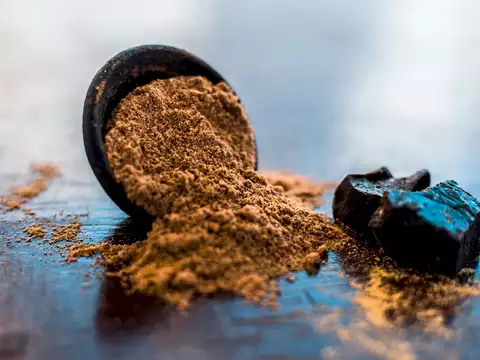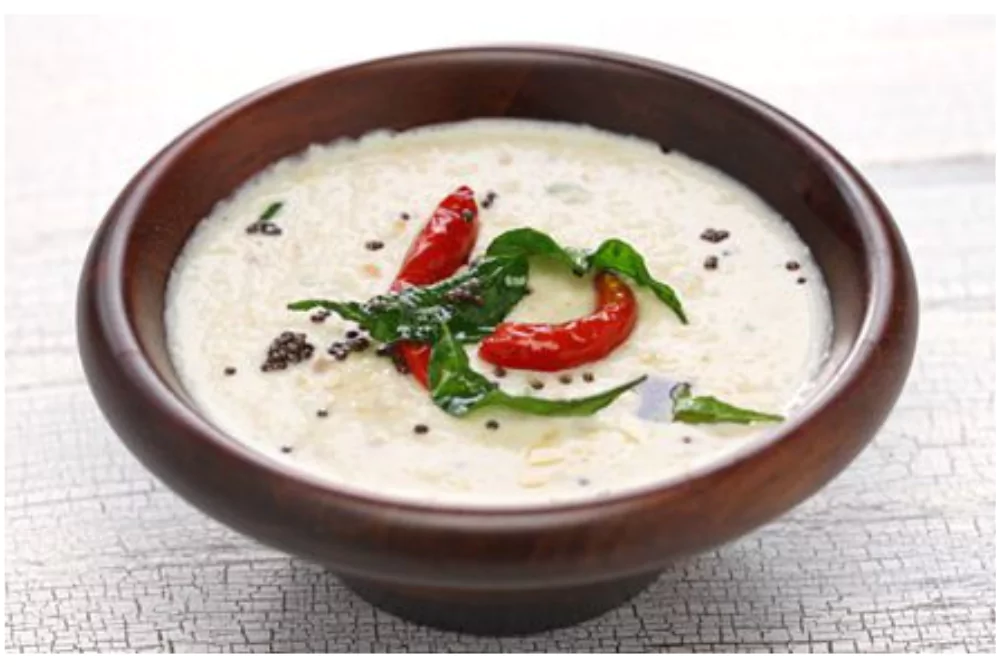What are the main ingredients in spicy hing chutneys and dips?
Summary: The main ingredients in spicy hing chutneys and dips typically include hing (asafoetida), various spices, herbs, and a base such as yogurt, tomatoes, or tamarind.
Detailed Answer:
- Hing (Asafoetida): A key ingredient that adds a unique flavor and digestive benefits.
- Spices: Common spices include cumin, coriander, red chili powder, and turmeric.
- Herbs: Fresh herbs like cilantro, mint, and curry leaves are often used.
- Base: Yogurt, tomatoes, tamarind, or coconut serve as the base to which other ingredients are added.
- Other Ingredients: Garlic, ginger, salt, and oil are also commonly used to enhance the taste.
Spicy hing chutneys and dips are a flavorful addition to any meal, combining aromatic spices with the distinct taste of hing. The specific combination of ingredients can vary based on the recipe, but the aim is to create a balance of heat, tanginess, and freshness. Hing, also known as asafoetida, is a resin extracted from the root of the Ferula plant. It has a strong, pungent aroma and flavor that mellows out when cooked, adding depth to dishes. The inclusion of spices like cumin, coriander, and red chili powder not only enhances the flavor but also brings in various health benefits. Fresh herbs such as cilantro and mint add a refreshing note, while the base ingredients like yogurt or tamarind provide a creamy or tangy texture. Other ingredients like garlic and ginger further enrich the taste profile, making these chutneys and dips a must-have in your culinary arsenal.
How can I use hing chutneys and dips to enhance the flavors of my meals?
Summary: Hing chutneys and dips can be used as condiments, marinades, or toppings to enhance the flavors of various dishes, from snacks to main courses.
Detailed Answer:
- As a Condiment: Serve alongside appetizers like samosas, pakoras, or kebabs.
- As a Marinade: Use to marinate meats, paneer, or vegetables before grilling or roasting.
- As a Topping: Drizzle over salads, rice dishes, or curries for an extra burst of flavor.
- In Sandwiches/Wraps: Spread inside sandwiches or wraps for a spicy kick.
- With Snacks: Pair with chips, crackers, or breadsticks for a tasty snack.
These versatile chutneys and dips can transform ordinary meals into gourmet experiences. By experimenting with different uses, you can find new and exciting ways to incorporate them into your culinary repertoire. For instance, a dollop of spicy hing chutney can elevate the taste of simple rice and lentils (dal), adding a rich, aromatic flavor. When used as a marinade, the chutney infuses meats and vegetables with its robust spices, making them more flavorful and tender. Drizzling a bit of chutney over your salad can introduce a whole new dimension of taste, while spreading it inside a sandwich or wrap can provide a delightful contrast to the other ingredients. Whether you’re snacking on chips or crackers, pairing them with a spicy hing dip can make for an irresistible treat. The possibilities are endless, and the more you experiment, the more you’ll discover new ways to enjoy these delicious chutneys and dips.
Are there any health benefits associated with consuming hing chutneys and dips?
Summary: Yes, consuming hing chutneys and dips can offer various health benefits, including improved digestion, anti-inflammatory properties, and relief from bloating.
Detailed Answer:
- Improved Digestion: Hing is known for its digestive benefits, helping to reduce gas and bloating.
- Anti-Inflammatory Properties: The spices used in these chutneys and dips often have anti-inflammatory effects.
- Rich in Antioxidants: Ingredients like garlic, ginger, and turmeric are rich in antioxidants that help fight free radicals.
- Boosts Immunity: Spices and herbs in these recipes can enhance immune function.
- Low in Calories: They are usually low in calories, making them a healthy addition to meals.
Incorporating these chutneys and dips into your diet can contribute to overall well-being. However, it’s important to consume them in moderation, especially if they contain high levels of salt or oil. Hing has been used in traditional medicine for centuries, particularly in Ayurveda, for its digestive properties. It helps stimulate digestive enzymes and reduces symptoms of indigestion, making it a valuable addition to meals. The anti-inflammatory properties of spices like turmeric and ginger can help alleviate chronic inflammation and reduce the risk of related diseases. Antioxidants found in ingredients like garlic and cumin help protect the body from oxidative stress and support overall health. Additionally, the immune-boosting properties of these spices and herbs can enhance your body’s natural defense mechanisms. Given their low calorie content, these chutneys and dips can be a great way to add flavor to your meals without adding extra calories. However, it’s essential to be mindful of the ingredients and their quantities to ensure a balanced and healthy diet.
How do I store spicy hing chutneys and dips to maintain their freshness and flavor?
Summary: To maintain freshness, store spicy hing chutneys and dips in airtight containers in the refrigerator and consume within a week. For longer storage, freezing is an option.
Detailed Answer:
- Airtight Containers: Use airtight containers to prevent contamination and preserve flavor.
- Refrigeration: Store in the refrigerator to keep them fresh for up to a week.
- Freezing: For extended storage, freeze in small portions and thaw as needed.
- Proper Labeling: Label containers with the date of preparation to keep track of freshness.
- Avoid Cross-Contamination: Use clean utensils to scoop out portions to avoid contaminating the entire batch.
By following these storage tips, you can enjoy the rich flavors of your spicy hing chutneys and dips for longer periods. Proper storage ensures that the taste and quality remain intact. When storing in the refrigerator, make sure to use containers with tight-fitting lids to prevent air from entering, which can cause the chutneys to spoil. Freezing chutneys in small portions allows you to thaw only what you need, reducing waste and maintaining freshness. Always use clean utensils to scoop out portions to prevent introducing bacteria into the container. Proper labeling with the date of preparation helps you keep track of how long the chutneys have been stored, ensuring you consume them while they are still fresh. These steps will help you preserve the delightful flavors and nutritional benefits of your homemade or store-bought spicy hing chutneys and dips.
Can I make hing chutneys and dips at home? If so, what are some easy recipes to try?
Summary: Yes, you can make hing chutneys and dips at home with simple ingredients. Here are some easy recipes to try, including a classic hing chutney and a spicy yogurt dip.
Detailed Answer:
Classic Hing Chutney
- Ingredients:
- 1 teaspoon hing (asafoetida)
- 1 cup tamarind pulp
- 1 tablespoon jaggery (optional)
- 1 teaspoon red chili powder
- 1 teaspoon cumin seeds
- Salt to taste
- Water as needed
- Method:
- Soak tamarind in water for 30 minutes and extract the pulp.
- In a pan, heat oil and add cumin seeds until they splutter.
- Add hing, red chili powder, and the tamarind pulp. Cook for 5-10 minutes.
- Add jaggery and salt, and cook until the mixture thickens.
- Let it cool and store in an airtight container. Serve as needed.
Spicy Yogurt Dip
- Ingredients:
- 1 cup yogurt
- 1/2 teaspoon hing (asafoetida)
- 2 green chilies, finely chopped
- 1/4 cup fresh cilantro, chopped
- 1 teaspoon cumin powder
- Salt to taste
- 1 tablespoon lemon juice
- Method:
- In a bowl, mix the yogurt and hing until smooth.
- Add green chilies, cilantro, cumin powder, and salt. Mix well.
- Stir in the lemon juice for a tangy flavor.
- Refrigerate for at least 30 minutes before serving.
- Serve with snacks or as a side to your main meal.
Creating these chutneys and dips at home allows you to customize the flavors to your liking. Experiment with different ingredients and spice levels to find your perfect combination. The Classic Hing Chutney pairs well with Indian snacks like samosas and pakoras, while the Spicy Yogurt Dip is perfect for sandwiches, wraps, and as a fresh topping for salads and grilled dishes.
Conclusion
Making hing chutneys and dips at home is a delightful and rewarding experience. With just a few ingredients and some simple steps, you can create flavorful accompaniments that elevate your meals. Whether you prefer the tanginess of tamarind in the Classic Hing Chutney or the creamy spiciness of the Spicy Yogurt Dip, these recipes are sure to become a staple in your kitchen. Enjoy the process of experimenting with different flavors and discover how these versatile chutneys and dips can transform your culinary creations.





